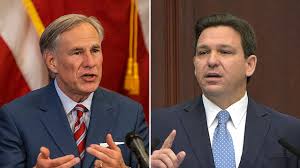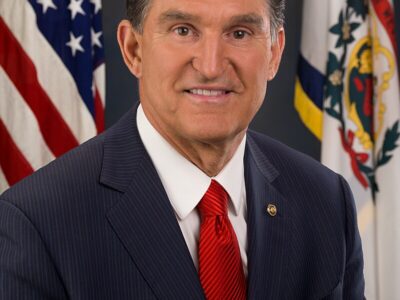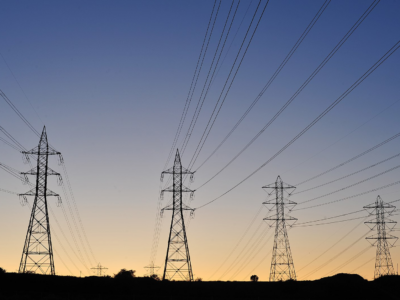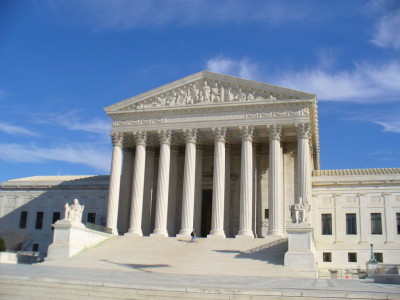Energy
What Would Climate Policy Look Like Under One-Party Conservative Rule?
You only need to look at Texas or Florida for the answer: a complete erasure of climate action.
This is not to say that unified control of the federal government by the hard right would entirely halt the progress of clean energy. Just that, if Florida and Texas are any guides, they would do their best to make that happen and to maximize use of what Trump has called the liquid gold under our feet.
CONTINUE READINGJustin Pidot: Manchin’s Latest and Last Run at Promoting Fossil Fuels through a Permitting Reform Bill
His proposal is a bad deal on climate and an afront to environmental justice
Last week, Senator Manchin unveiled his latest permitting bill, negotiated with Senator Barrasso and set to be marked up by the Senate Committee on Energy and Natural Resources on Wednesday. After recently completing a 3 ½ year stint as general counsel at the White House Counsel of Environmental Quality, I recognize that continuing to improve …
CONTINUE READINGThe Best Reason for Optimism About Climate Action
As the saying goes, “It’s the economy, stupid.”
Renewable energy costs have plunged to an extent few people realize. If cellphone prices had dropped as fast since 2010 as the cost of solar power, you could buy a new iPhone for about thirty bucks today.
CONTINUE READINGThe D.C. Circuit and the Biden Power Plant Rule
The court’s denial of a stay is very good news for EPA
The D.C. Circuit frequently denies stays, but this ruling was notable for three reasons: It allows an important climate change regulation to go into effect; it clarified an important legal doctrine; and it has a good chance of being upheld on appeal.
CONTINUE READING35 Major Climate Initiatives Under Biden
By any measure, it has been an eventful four years for climate policy, with billions in spending and many major regulations finalized. Here’s a timeline of the Top 30 actions.
In light of President Biden’s withdrawal from the 2024 presidential race yesterday, we thought it was appropriate to update this piece about the climate legacy of the Biden-Harris Administration. In his four years in office, Donald Trump rolled back essentially every existing federal policy to limit climate change. The picture under the Biden Administration has …
Continue reading “35 Major Climate Initiatives Under Biden”
CONTINUE READINGHere We Go Again! (Maybe)
The possibility of a second Trump presidency looms ahead. Time for some contingency planning!
As the Project 2025 report shows, people on the other side are doing their own contingency planning, and so should climate advocates. We can expect many of the same actions, beginning with massive regulatory rollbacks (over a hundred rollbacks last time around).
CONTINUE READINGRenewable Energy: A Timeline
Today’s wind and solar resources didn’t come out of nowhere.
The first efforts to use of wind to generate electricity was 134 years ago, and the photoelectric effect was discovered six decades earlier. So in a sense, these are old technologies — about the same age as the very first internal combustion engines. But the scientific and technological advances that made these technologies competitive with …
Continue reading “Renewable Energy: A Timeline”
CONTINUE READING(Energy) Independence Day
A post in which I surprise readers — and myself — with strong praise for George W. Bush.
The only way to achieve energy independence is to achieve independence from fossil fuels. That’s not something we can achieve overnight, but the closer we come, the better — for our health, our national security, and the world.
CONTINUE READINGGrid Experts Weigh in on EPA’s Good Neighbor Plan for NOx
UCLA Emmett Institute faculty submit amicus brief in Utah v. EPA, a major ozone case, on behalf of some of the nation’s leading grid experts.
Last year, EPA issued a new federal implementation plan to address interstate pollution from nitrogen oxides under the Clean Air Act’s Good Neighbor Provision. The Good Neighbor Provision is designed to address interstate pollution: those instances where emissions from upwind states impose harms across state lines, effectively shifting the costs of controlling their pollution to …
Continue reading “Grid Experts Weigh in on EPA’s Good Neighbor Plan for NOx”
CONTINUE READINGThe Supreme Court & Interstate Pollution
It was puzzling that the Court agreed to hear the case. How has it ruled? And why?
Months ago, the Supreme Court agreed to hear an “emergency” request to stay EPA’s new rule regulating interstate air pollution. Like most observers, I was puzzled that the Court was bothering with the case before the D.C. Circuit even had a chance to consider the merits of the challenges. Months later, the Court has finally …
Continue reading “The Supreme Court & Interstate Pollution”
CONTINUE READING












